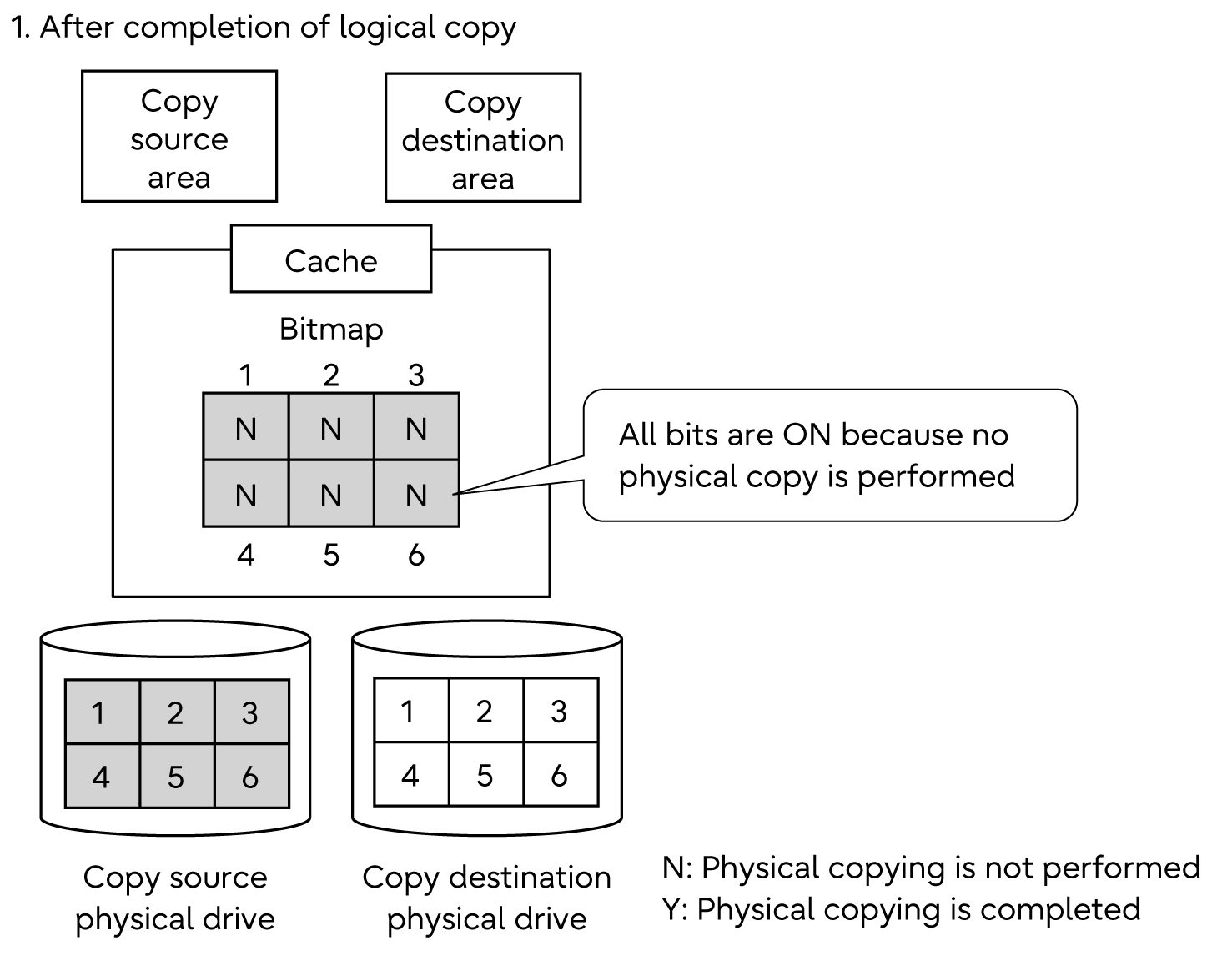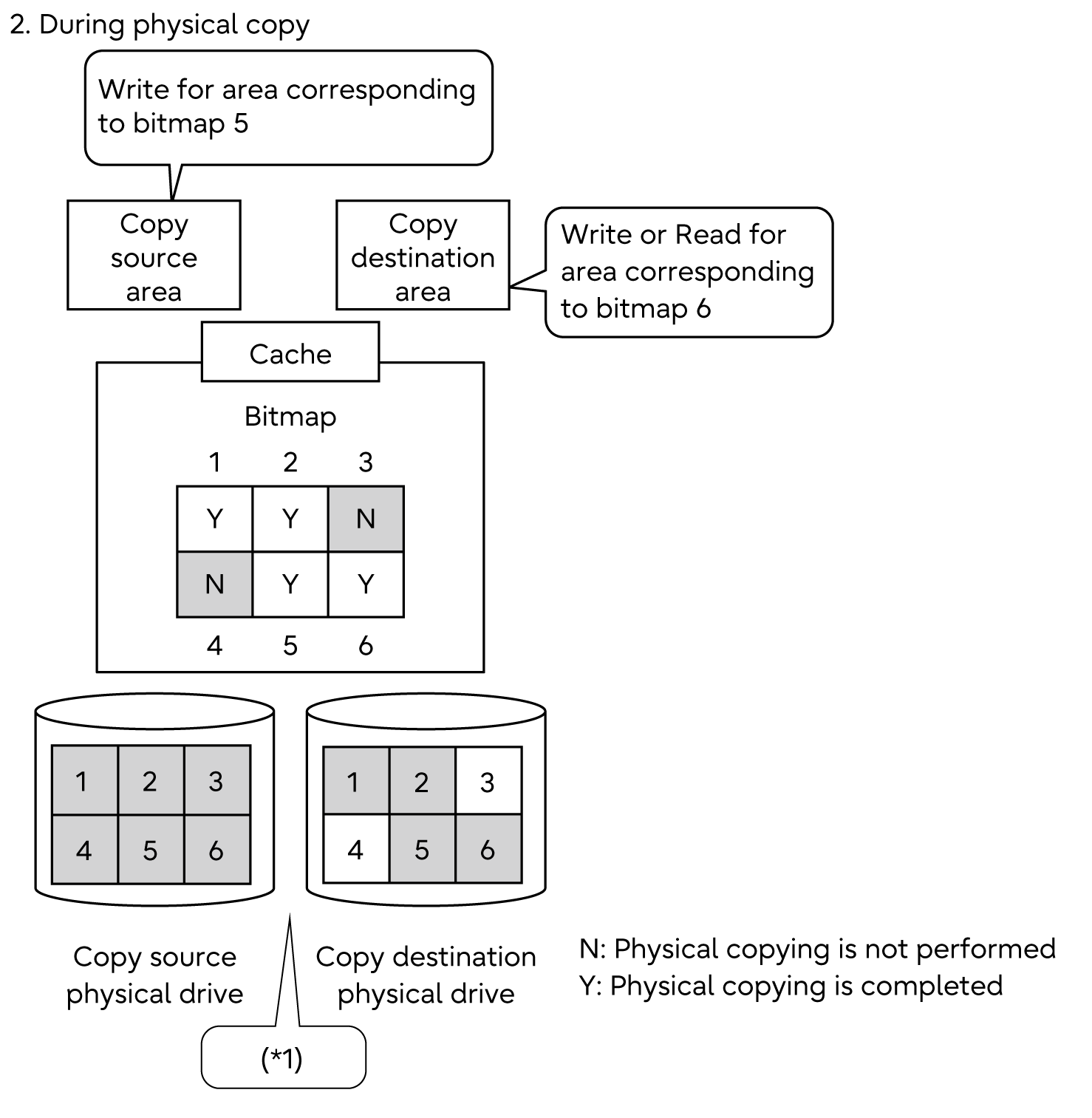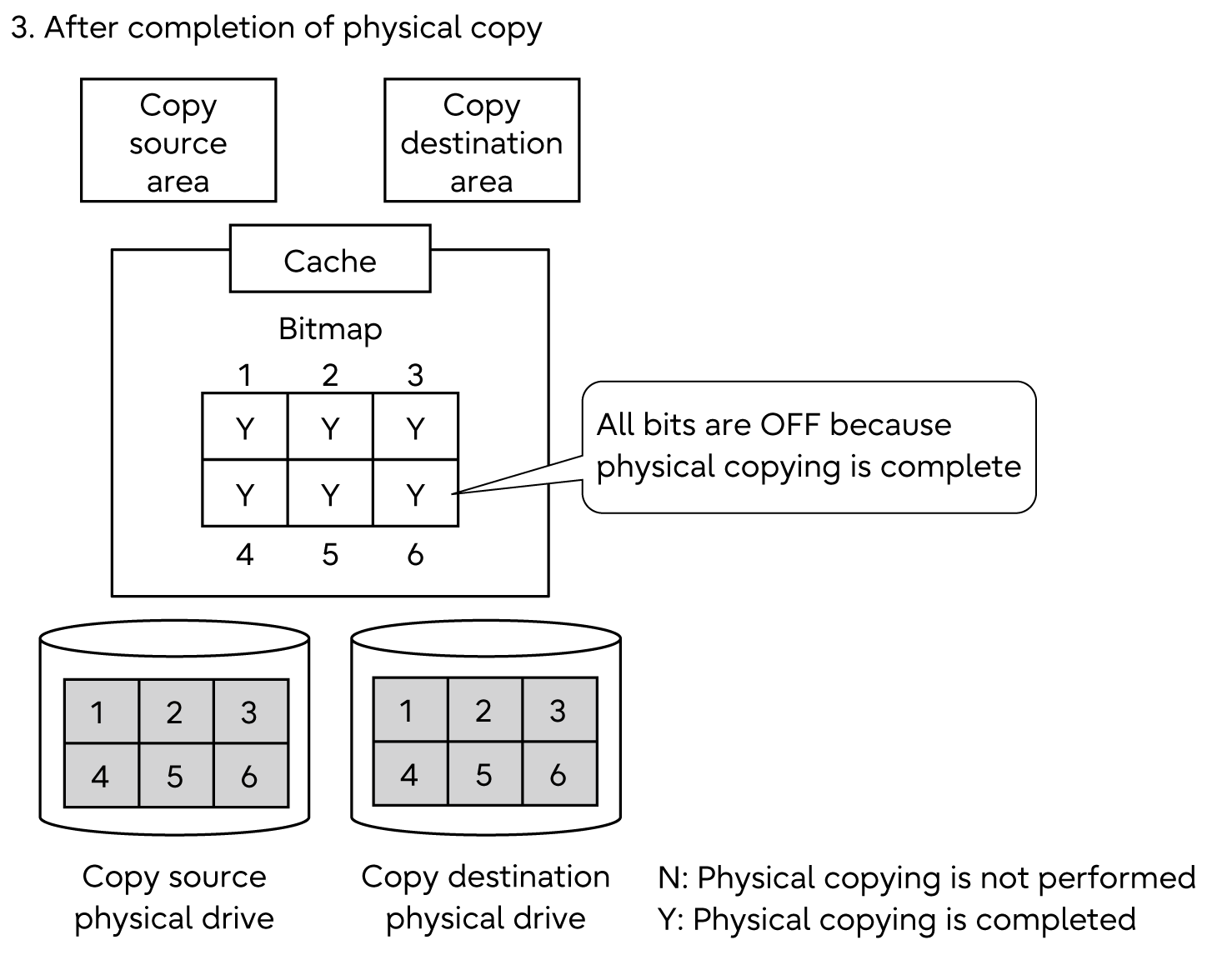OPC Specification
This section describes the mechanism and characteristics of OPC.
OPC has two processing phases, a logical copy phase and a physical copy phase.
Logical copy
When an OPC session is started, a bitmap that manages the copy state is generated and the logical copy is completed.
By monitoring the copy using this bitmap and performing exclusive control with the host I/O, the data of the copy source area at the time of logical copy completion is created in the specified copy destination area.
When the logical copy is completed, all the bitmaps are initialized (set as "not copied").
Physical copy
After the logical copy, the data of the copy source area is physically copied in sequence to the copy destination area, and the bitmap for the area changes to "copied". When a physical copy to all areas is completed, the bitmap in the ETERNUS DX is released and the OPC session is deleted.
When a write request for an uncopied area of the copy source occurs after the logical copy is completed
The data is immediately copied before the write to the copy destination area, and the write request is processed after that. At this time, the bitmap of the relevant area is changed to "copied".
When a write or read request for an uncopied area of the copy destination occurs after the logical copy is completed
The data of the relevant area is copied immediately and the write or read request is processed after that. At this time, the bitmap of the relevant area is changed to "copied".


| *1 | : |
|

Performance Characteristics of Logical Copy and Physical Copy
Once the logical copy is completed, the copy destination area becomes accessible. At this time, the copy destination area has the contents of the copy source area when the logical copy is completed.
Even if host access is stopped, the physical copy continues.
If the ETERNUS DX is stopped due to a power off or a power failure, the physical copy restarts after the storage system reboots.
Because this copy method not only performs logical copies but also physical copies, it has the following benefits.
This method avoids performance degradation caused by concentrated access to the copy source
Even if the RAID group of the copy source area becomes inaccessible due to a double drive failure, this method is more reliable for data security than the logical copy-on-write method (SnapOPC), because the data is still available on another RAID group (assuming the physical copy is complete).



